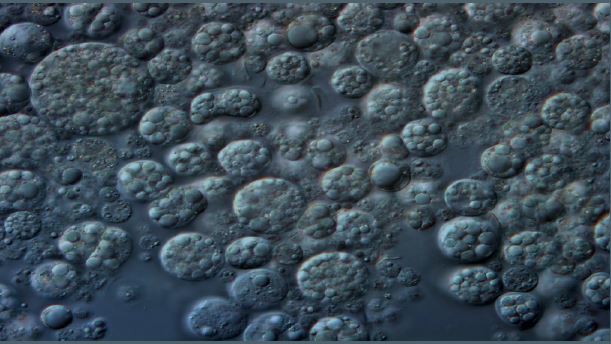
Special Lecture on EPA & DHA-Producing Microalgae at the 32nd Annual Meeting of the Japanese Society for Lipid Nutrition
The 32nd Annual Meeting of the Japanese Society for Lipid Nutrition was held on September 8th to 9th, 2023, at the Kawagoe Prince Hotel in Saitama, Japan. The conference was chaired by Professor Masanori Katakura of Josai University, and the theme of the meeting was "The Future of Lipid Nutrition – Towards Sustainable Lipid Nutrition."
During the meeting, a special lecture was given by Kenji Ishihara of the Fisheries Research and Education Organization's Fisheries Technology Laboratory, Euglena's joint research partner. Ishihara's talk focused on the potential of microalgae in the production and utilization of eicosapentaenoic acid (EPA) and docosahexaenoic acid (DHA).
Microalgae's Role in Satisfying the Growing Demand for Long-Chain Omega-3 Fatty Acids
Ishihara's presentation was based on the premise that the demand for long-chain omega-3 fatty acids, both for direct human consumption and as feedstock, is expected to exceed the amounts that can be sustainably harvested from marine resources. The talk explored the technological advancements and potential in using microalgae to meet this growing need.
Variations in Fatty Acid Composition Across Different Types of Algae
Among the focal points were commonly consumed edible algae like Euglena, Chlorella, and Spirulina. Ishihara discussed the differences in their fatty acid compositions. He also mentioned marine microalgae like Nannochloropsis, Isochrysis, Chaetoceros, and Schizochytrium, outlining the variations in their fatty acid profiles.
| Euglena gracilis *1 | Chrorella vulgaris *2 | Arthrospira platensis *3 | |
| Lipid content (%dw) | 5 ~ 10 | 19 | 2 ~ 8 |
| C16:0 | 10 | 24.6 | 43.6 |
| C18:1 | 8.3 | 10 | 4.7 |
| C18:2 | 3.2 | 21 | 20.1 |
| C18:3n-3 | 2 | 27 | 0 |
| C20:4n-6 | 24.8 | 0 | 0 |
| C20:5n-3 | 2.7 | 0 | 0 |
| C22:6n-3 | 0 | 0 | 0 |
*1: Hayashi M et al. Biosci. Biotech. Biochem. 58(1994).
*2: Yun HS et al. Heliyon 6(2020).
*3: Aouir A et al. Food Measure 11(2017).
| Nannochloropsis oculata *1 | Isochrysis galbana *2 | Chaetoceros calcitrans *3 | Schizochytrium *4 | |
| Lipid content (%dw) | 16.5 | 14.8 | 20 | 15 ~ 70 |
| C16:0 | 19.4 | 18.6 | 3 | 49.4 |
| C18:1n-9 | 7.5 | 36.3 | 0 | 0 |
| C20:4n-6 | 4.4 | 0 | 0.25 | 0 |
| C20:5n-3 | 23.9 | 0.2 | 21.4 | 0.8 |
| C22:6n-3 | 0.0 | 5.4 | 0.9 | 32.5 |
*1: Analysis of products donated by the Eavis Algae Industry Research Institute.
*2: Grant Burgess J et al. Appl. Microbiol. Biotech. 39(1993).
*3: Sato T e al. J. Shellfish Res. 37(2018).
*4: Yokochi T et al. Appl. Microbiol. Biotech. 49(1998).
Aurantiochytrium's Promise in Addressing Locomotive Syndrome
Of particular interest was the mention of Aurantiochytrium, which is also the subject of collaborative research with Euglena Co., Ltd. Ishihara cited specific research results to highlight Aurantiochytrium's rapid growth characteristics and its potential anti-inflammatory effects. These properties make Aurantiochytrium a promising candidate for future solutions to locomotive syndrome, a condition affecting mobility in the elderly.
The conference served as an important platform for discussing the evolving landscape of lipid nutrition, and presentations like Ishihara's add valuable insights into the potential applications of microalgae in this field.
